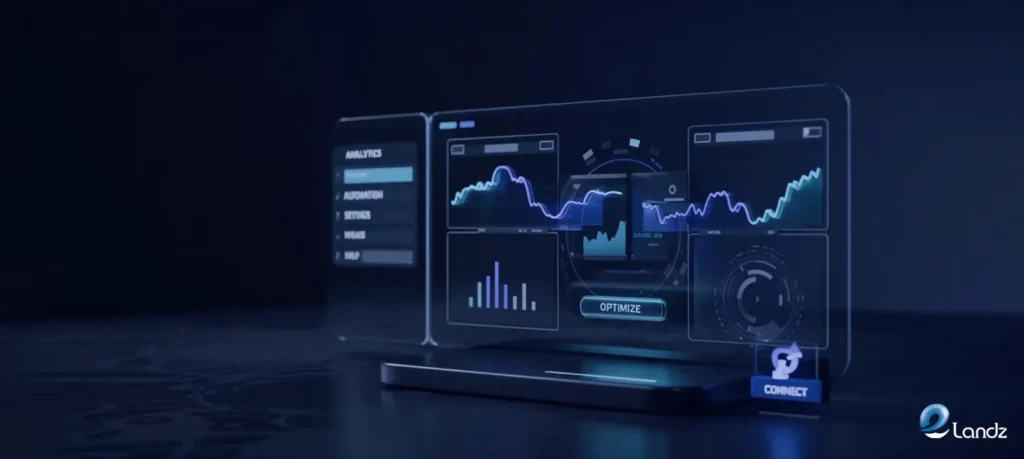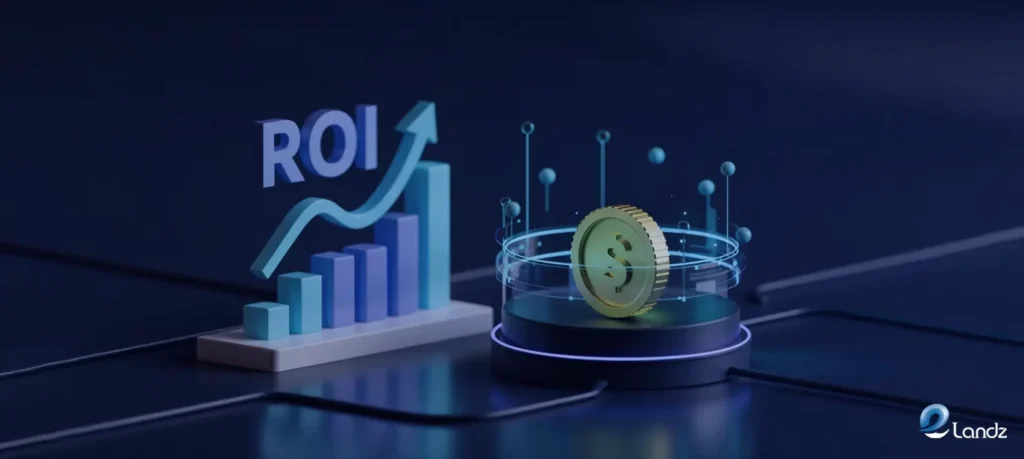
The Difference Between Email Marketing Versus Marketing Automation
26 Aug 2025Introduction
The choice between email marketing versus marketing automation often determines the trajectory of a company’s growth strategy. While both approaches utilize electronic messaging to reach their audiences, understanding the fundamental differences can mean the difference between stagnant campaigns and exponential business growth.
What Defines Email Marketing?
Email marketing represents a direct communication strategy where businesses send targeted messages to subscribers through their inboxes. This approach focuses primarily on creating, sending, and analyzing email campaigns to promote products, services, or brand awareness. Traditional email marketing platforms excel at managing subscriber lists, designing visually appealing templates, and tracking basic engagement metrics like open rates and click-through rates.
The strength lies in its simplicity and cost-effectiveness. Businesses can quickly launch campaigns, segment their audience based on basic demographics, and measure immediate results. This makes it particularly attractive for small businesses, startups, and organizations with straightforward marketing objectives.
However, email marketing operates within a limited scope. It primarily tracks recipient behavior within the email itself, whether someone opened the message, clicked a link, or forwarded it to others. The customer journey beyond the email remains largely invisible, creating gaps in understanding prospect behavior and preferences.
Understanding Marketing Automation

Marketing automation involves a wide-ranging strategy for engaging customers, going well beyond simple email campaigns. This sophisticated system orchestrates multi-channel marketing efforts, tracking customer interactions across websites, social media, mobile apps, and various touchpoints throughout the buyer’s journey.
The main benefit of marketing automation is its capacity to create a single, unified view of each prospect’s online activity. When someone clicks an email link, the system tracks their subsequent actions, including which pages they visit, how long they stay, what content they download, and which forms they complete. This comprehensive data collection enables businesses to build detailed customer profiles and deliver highly personalized experiences.
Marketing automation platforms integrate seamlessly with Customer Relationship Management (CRM) systems, sales tools, and analytics platforms. This integration creates a powerful ecosystem where marketing and sales teams can collaborate effectively, sharing insights and optimizing the entire customer acquisition process.
Core Differences in Data Collection and Tracking
The fundamental distinction in email marketing versus marketing automation begins with data collection capabilities. Email marketing tools provide insights limited to email interactions. Marketers can see aggregate statistics showing campaign performance, but individual customer journeys remain fragmented and incomplete.
Marketing automation transforms this limitation by implementing comprehensive behavioral tracking. Every website visit, content download, social media interaction, and form submission becomes part of a detailed customer profile. This wealth of information enables businesses to understand not just what customers do, but why they do it and when they’re most likely to take action.
For example, while email marketing might show that 25% of recipients opened a promotional message, marketing automation reveals which specific individuals opened it, what they did afterward, how they’ve engaged with previous campaigns, and their likelihood to purchase based on behavioral patterns.
Campaign Complexity and Personalization
Traditional email marketing operates on a “broadcast” model, where messages are sent to large lists with basic segmentation. Even with dynamic content capabilities, the personalization remains relatively surface-level, typically limited to inserting names or adjusting content based on broad demographic categories.
Marketing automation revolutionizes campaign complexity through intelligent workflow design. Instead of sending the same sequence to everyone, these systems create adaptive pathways that respond to individual behaviors. If a prospect downloads a specific whitepaper, they automatically enter a nurture sequence related to that topic. If they visit pricing pages multiple times, they might receive case studies from similar companies.
This behavioral responsiveness creates what experts call “customer-centric messaging.” Rather than forcing prospects through predetermined paths, marketing automation allows the customer’s actions to dictate the next best communication. This approach feels more natural and relevant to recipients, leading to higher engagement and conversion rates.
Lead Scoring and Qualification
One of the most significant differentiators in email marketing versus marketing automation is lead scoring capability. Email marketing platforms typically treat all subscribers equally, providing no mechanism to identify which prospects are most likely to convert.
Marketing automation introduces sophisticated scoring algorithms that assign values to different behaviors and characteristics. A prospect might earn points for visiting high-intent pages, downloading relevant content, attending webinars, or matching ideal customer profiles. As scores accumulate, the system can automatically notify sales teams when leads reach qualification thresholds.
According to research, companies implementing lead scoring see a 77% increase in lead generation ROI compared to those that don’t use scoring systems. This dramatic improvement stems from sales teams focusing their efforts on prospects with the highest conversion probability, rather than pursuing every lead equally.
Revenue Attribution and ROI Measurement

Email marketing provides limited visibility into revenue attribution. While platforms can track whether someone clicked a purchase link, they cannot definitively connect email interactions to final sales, especially in complex B2B environments where multiple touchpoints influence buying decisions.
Marketing automation solves this attribution challenge through comprehensive journey mapping. The system tracks every interaction from initial awareness through final purchase, providing clear visibility into which marketing activities actually drive revenue. This insight enables businesses to optimize their marketing mix, investing more in high-performing channels and reducing spend on ineffective tactics.
The impact of this improved attribution is substantial. Businesses using marketing automation see an average of 451% increase in qualified leads and can reduce marketing overhead by 12.2%. These improvements stem from a better understanding of which marketing investments generate the highest returns.
Automation Sophistication Levels
While modern email marketing platforms offer basic automation features like autoresponders and scheduled campaigns, their capabilities pale in comparison to true marketing automation. Email automation often relies on simple, trigger-based campaigns, such as sending a welcome series when someone subscribes or a follow-up message when a shopping cart is abandoned.
Marketing automation operates at a much higher level of sophistication. These systems can analyze behavioral patterns, optimize send times based on individual preferences, adjust messaging based on engagement history, and even suggest offline touchpoints like phone calls or direct mail when digital engagement decreases.
The intelligence built into modern marketing automation extends to predictive capabilities. Advanced platforms use machine learning to identify prospects most likely to churn, predict optimal content recommendations, and suggest the best times to transition leads to sales teams.
Integration Capabilities and Ecosystem Connectivity
Email marketing tools typically operate as standalone systems with limited integration capabilities. While they may connect to basic CRM platforms or e-commerce systems, these integrations often require manual configuration and provide limited data synchronization.
Marketing automation platforms are designed as central hubs within the marketing technology stack. They integrate seamlessly with CRM systems, analytics tools, social media platforms, content management systems, and sales enablement tools. This connection creates a unified system where data moves smoothly between different platforms, allowing for more advanced analysis and automation.
Cost Considerations and Resource Requirements
The financial investment required represents another key difference in email marketing versus marketing automation. Email marketing solutions often provide free tiers or low monthly costs, making them accessible to businesses of all sizes. The learning curve is generally gentle, allowing teams to become productive quickly without extensive training.
Marketing automation represents a more significant investment, both financially and in terms of human resources. These platforms typically start at hundreds or thousands of dollars monthly, reflecting their advanced capabilities. Successfully implementing marketing automation requires dedicated resources for setup, ongoing management, and optimization.
However, the return on investment often justifies the higher costs for businesses with complex sales cycles or substantial lead volumes. The efficiency gains, improved conversion rates, and enhanced sales productivity can quickly offset the additional expense.
When to Choose Email Marketing
Email marketing remains the ideal choice for businesses with straightforward communication needs. Organizations selling simple products with short sales cycles often find email marketing perfectly adequate for their requirements. E-commerce businesses running promotional campaigns, newsletters, or basic cart abandonment sequences can achieve excellent results without more complex automation.
Startups and small businesses benefit from email marketing’s simplicity and affordability. These organizations can build audience relationships, test messaging strategies, and generate revenue while keeping costs minimal. As growth accelerates and marketing needs become more sophisticated, they can evaluate upgrading to automation platforms.
When Marketing Automation Makes Sense
Marketing automation becomes essential for businesses with complex customer journeys, multiple buyer personas, or lengthy sales cycles. B2B companies selling high-value products or services particularly benefit from automation’s lead nurturing and scoring capabilities.
Organizations generating substantial lead volumes need automation to manage prospect engagement effectively. Without automated workflows, manual follow-up becomes impossible at scale, leading to missed opportunities and poor customer experiences.
Companies prioritizing account-based marketing strategies find automation invaluable for coordinating multi-channel campaigns and tracking engagement across entire buying committees. The ability to personalize experiences for different stakeholders while maintaining consistent messaging proves crucial for complex B2B sales.
Implementation Best Practices
Regardless of which approach you choose in the email marketing versus marketing automation decision, success depends on proper implementation. Start by clearly defining your goals, understanding your audience, and mapping the customer journey from awareness to purchase.
For email marketing implementations, focus on building quality subscriber lists, creating compelling content, and optimizing campaigns based on performance data. Regular testing of subject lines, send times, and content formats helps improve results over time.
Marketing automation implementations require more strategic planning. Begin by documenting current processes, identifying automation opportunities, and designing workflows that align with customer behavior patterns. Integration with existing systems should be prioritized to ensure data consistency and workflow efficiency.
Future Trends and Considerations

The distinction between email marketing versus marketing automation continues evolving as artificial intelligence and machine learning become more prevalent. Modern platforms increasingly incorporate predictive analytics, automated content optimization, and advanced personalization capabilities.
Email marketing tools are adopting features traditionally associated with automation platforms, while automation systems become more user-friendly and accessible to smaller businesses. This convergence suggests that the lines between categories will continue blurring, though fundamental differences in scope and sophistication will remain.
Making the Right Choice for Your Business
The decision between email marketing versus marketing automation ultimately depends on your business’s needs, resources, and growth objectives. Organizations with simple communication needs and limited budgets often find email marketing sufficient for achieving their goals. Companies managing complex customer relationships or scaling rapidly typically benefit from automation’s advanced capabilities.
Consider starting with email marketing to establish basic processes and an understanding of customer behavior. As your needs become more sophisticated and your budget allows, transitioning to marketing automation can unlock additional growth opportunities and operational efficiencies.
FAQs
Check out this FAQ section!
Can I use both email marketing and marketing automation together?
Yes, many businesses start with email marketing and gradually incorporate automation features. Some organizations use email marketing for simple campaigns while implementing marketing automation for complex lead nurturing sequences. However, using separate platforms can create data silos and workflow complications.
How much does marketing automation cost compared to email marketing?
Email marketing platforms typically range from free to $50 to 200 monthly for small to medium businesses. Marketing automation platforms usually start at $300-1000+ monthly, with enterprise solutions costing thousands. The higher investment reflects more sophisticated features and capabilities.
What is the main difference between email marketing versus marketing automation?
Email marketing focuses specifically on creating and sending email campaigns, tracking basic metrics like opens and clicks. Marketing automation encompasses a broader approach, tracking customer behavior across multiple channels and automating complex, multi-step marketing workflows based on individual actions and preferences.
Which approach is better for B2B companies?
Marketing automation generally provides more value for B2B companies due to longer sales cycles, multiple decision-makers, and complex buyer journeys. The lead scoring, behavioral tracking, and CRM integration capabilities align well with B2B sales processes. However, small B2B companies might start with email marketing before upgrading.
How do you know when to upgrade from email marketing to marketing automation?
Consider upgrading when you’re managing multiple customer segments, need advanced personalization, require lead scoring capabilities, or want to track behavior beyond email interactions. If you’re manually managing complex follow-up sequences or struggling to identify qualified leads, automation likely provides significant benefits.


